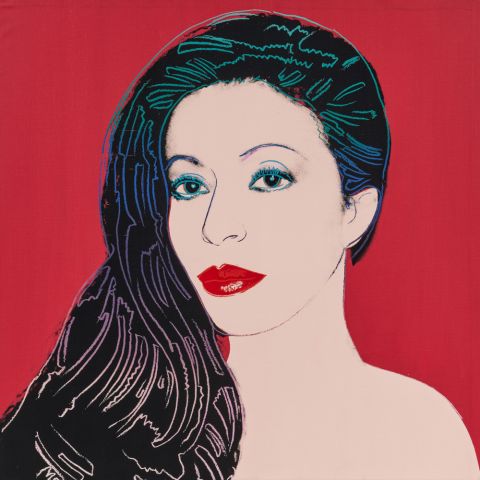
Lot 25 | Heinz Mack | "Dynamische Struktur schwarz und braun" (Herbstblätter)
1931 Lollar
Title: "Dynamische Struktur schwarz und braun" (Herbstblätter).
Date: 1961/62.
Technique: Synthetic resin on untreated cotton.
Measurement: 85 x 85.5cm.
Notation: Titled, signed and dated verso top: "dynamische Struktur" schwarz und braun mack 61/62. Additionally equipped with directional arrow.
Frame/Pedestal: Studio bar.
The work comes with a certificate signed by the artist in October 1988.
Provenance:
- Private collection
- Private collection North Rhine-Westphalia
Literature:
- Fleck, Robert (ed.): Heinz Mack - ZERO Malerei, Catalogue raisonné, Vol. I 1956-1968, Munich/Düsseldorf/Vienna 2017, cat. rais. no. 1962/43, ill. p. 277 and (in Vol. II) p. 73
- By the main protagonist of the Düsseldorf ZERO group
- Paintings from the early ZERO period are among the most sought-after works on the art market
- Exceptional, rare colour scheme with a particularly dynamic, shimmering structure
- Embodies Mack's early visual explorations of light, surface, colour and form
Conceptual foundations of a new style of painting
In 1957, Otto Piene and Heinz Mack founded ZERO – a movement of young, experimental artists in the "Stunde Null" (zero hour) after the Second World War, which quickly gained international recognition from its base in Düsseldorf. Light, air, fire and water became the new artistic materials in their radical expansion of the concept of art.
Heinz Mack's representational works are found only in his early work before 1955. Soon, however, the artist moved away from figuration and individual style and sought a clearly ordered, rational visual language based on objectifiable principles. The forms of expression and design developed in the early years of his career retained their formative validity throughout his entire oeuvre.
As early as 1958, in his manifesto "Die neue Dynamische Struktur" (The New Dynamic Structure), printed in the first issue of the ZERO magazine published jointly with Otto Piene, the artist explained the theoretical foundations of his work: "A colour can have different meanings, but it gains its virtual objectification, i.e. its actual energy, when it enters into its own vibration: this is its breath, its life. [...] We achieve this intensity of colour vibration through the continuum of deviation from an ideal monochrome, or through the continuum of approximation to such a monochrome. [...] I give colour a vibration, i.e. I give colour a structure, or: I give colour its form. There can no longer be any question of form creation in the previous sense." (Heinz Mack quoted from: ZERO 1 (reprint), pp. 12/13)
Mack's idea of a new pictorial concept is based on precise control of perception. Parallel horizontal zones, formed by a multitude of small, only minimally varied vertical elements, form the constructive framework of his paintings from these years. They create a subtle movement within the picture. The colour scheme, often reduced to black and white, refers to the elementary polarity of light and shadow as core elements of painting.
The energy of movement in the rhythm of form
The principle of systematic repetition is also evident in Mack's early "Dynamic Structure Black and Brown" from 1961/62: a strictly structured composition of horizontally arranged rows of dark, vertically placed forms on a warm brown background. Abstract, wedge-shaped elements vary in density and form, creating a pulsating interplay of light and shadow, positive and negative forms, movement and stillness. The colour scale becomes denser towards the bottom – the brown glows increasingly brightly until it transitions into a deep reddish brown at the bottom edge of the picture. The surface seems to breathe, appearing alive and vibrant, while fine irregularities and flowing curves further enliven the background. The work is an exemplary testimony to Mack's painting in his early ZERO phase, in which he translates light and movement into structured, energetically charged pictorial fields.
Doris Hansmann
Print this lot | Recommend lot |
Conditions of this Lot
32% buyer’s premium on the hammer price
Estimated shipping costs for this lot:
Arrangement after the auction.
Heinz Mack Germany ZERO Post-War Art Post War 1960s Studio bar Shapes Painting Synthetic resin Colour
More lots which could be of your interest
- Estimate: 60.000 - 80.000 €
03.12.2025 - ca.18:18Modern | Post War | Contemporary | Galerie Thomas | The Jagdfeld Collection | Auction 03.12.2025 - Estimate: 120.000 - 180.000 €
03.12.2025 - ca.18:21Modern | Post War | Contemporary | Galerie Thomas | The Jagdfeld Collection | Auction 03.12.2025 - Estimate: 18.000 - 24.000 €
04.12.2025 - ca.16:21Modern | Post War | Contemporary | Galerie Thomas | The Jagdfeld Collection | Auction 03.12.2025 - Estimate: 40.000 - 60.000 €
04.12.2025 - ca.18:02Modern | Post War | Contemporary | Galerie Thomas | The Jagdfeld Collection | Auction 03.12.2025










